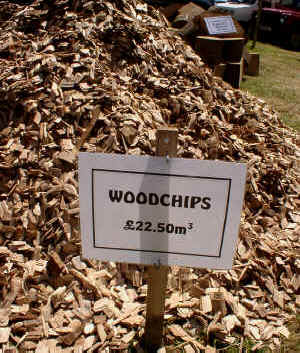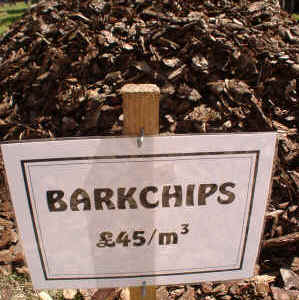 |
One of the main uses
for wood has always been as firewood, essential both for cooking and for keeping warm. It
is less important today in the Western world of central heating and electric or gas
cookers, but is still vital in less technologically developed countries. Managing supplies of wood sustainably, so that trees are continually replanted and that woodlands are not completely felled, is extremely important, particularly in less developed areas. Complete loss of woodland means loss of vital supplies of wood, erosion problems and often local changes in rainfall patterns. Even in technologically developed Britain, firewood still has value for providing comfort and warmth (left). |
| . | |
 |
Woodchips are
essentially a waste material, mainly produced as a by-product of working on larger pieces
of wood. Saw-mills produce wood chips, as does any wood carver or furniture maker. Small
branches and trees too small for sawmill use may also be mulched to produce wood chips as
a means of disposal. Although generally a by-product, wood chips have a multitude of
uses. In times past, they would have been extremely useful as kindling for lighting fires. Under wet conditions and using green wood, lighting a fire would have been a difficult task. In modern times, large quantities of wood chips are used as a fuel in some power plants. They may become increasingly important as they are a renewable resource, unlike the fossil fuels which fuel many power stations. Wood chips may be used in the pulp and paper industries. Oakwood chips flavour home-brewed beer, while Beechwood chips help with aging it. Woodchips provide good shock absorbing material as ground cover in many children's' playgrounds, as well as being used as a weed-suppressing mulch and for landscaping in gardens. |
| . | |
 |
Bark chips are another
waste product of other wood-working activities and industries. The bark generally has to
be removed before the wood can be fashioned for other uses. Bark contains large quantities of tannins and was for centuries used in industries for tanning animal hides. Depending on the tree species it may also contain a variety of resins and chemicals, many of which have traditional uses in herbal medicines and daily life. Quinine, Witch Hazel and Curare are all examples of compounds obtained from bark. Particular types of bark may also provide spices. Cinnamon is an example. Bark chippings (left) can also be used as a mulch, for landscaping or as a shock-absorbing material. |
| Prices shown in the above images were displayed at an agricultural show in Devon in July 2002. |
|